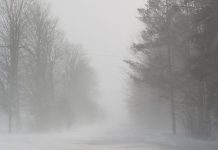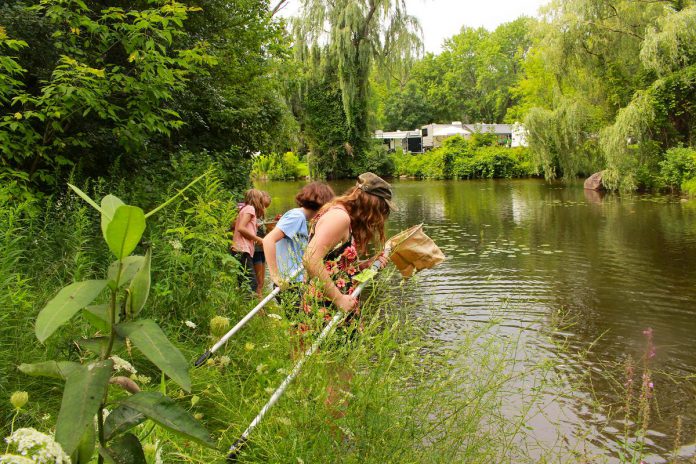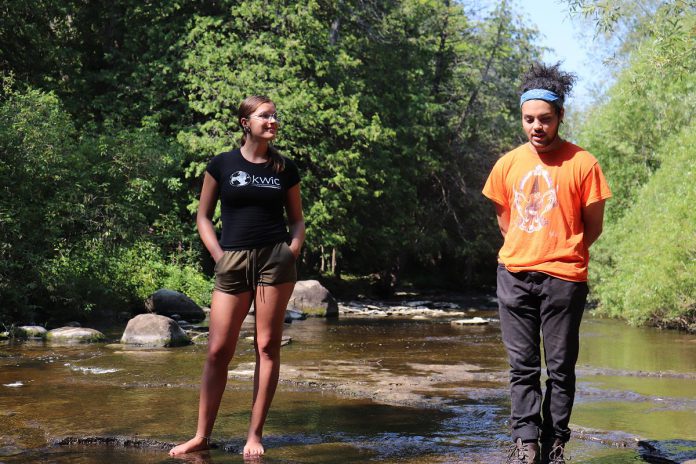Every Thursday, we publish live music events at pubs and restaurants in Peterborough and the greater Kawarthas region based on information that venues provide to us directly or post on their website or social media channels. Here are the listings for the week of Thursday, March 3 to Wednesday, March 9.
If you’re a pub or restaurant owner and want to be included in our weekly listings, please email our nightlifeNOW editor at nightlife@kawarthanow.com. For concerts and live music events at other venues, check out our Concerts & Live Music page.
Arthur's Pub
930 Burnham St., Cobourg
(905) 372-2105
Thursday, March 3
8-10pm - Open mic w/ Bruce Longman
Friday, March 4
8-10pm - Rick Bauer
Saturday, March 5
8-10pm - Davey Boy
Coming Soon
Thursday, March 10
8-10pm - Open mic w/ Bruce Longman
Friday, March 11
8-10pm - Chris Devlin
Saturday, March 12
8-10pm - Ferris & Pritchard
Black Horse Pub
452 George St. N., Peterborough
(705) 742-0633
Thursday, March 3
7-10pm - Jazz Night w/ Rob Phillips ft Marsala Lukianchuk
Friday, March 4
7-10pm - Rick & Gailie
Saturday, March 5
7-10pm - Dylan Ireland
Sunday, March 6
4-7pm - Lotus Wight & Meredith Moon
Monday, March 7
6-9pm - Rick & Gailie's Crash & Burn
Tuesday, March 8
7-10pm - Open stage
Wednesday, March 9
6-9pm - Ky Anto
Coming Soon
Saturday, March 12
7-10pm - Between The Static
Sunday, March 13
4-7pm - Bluegrass Menagerie
Wednesday, March 16
6-9pm - David Shewchuk
Thursday, March 17
11am-2pm - Fiddling Jay; 3-6pm - Irish Millie; 7-11pm - Washboard Hank & The Shenanigans
Burleigh Falls Inn
4791 Highway 28, Burleigh Falls
(705) 654-3441
Friday, March 4
5-8pm - Live music
Coach & Horses Pub
16 York St. S., Lindsay
(705) 328-0006
Thursday, March 3
10pm - Open jam w/ Gerald VanHaltren
Friday, March 4
10pm - Karaoke w/ DJ Ross
Saturday, March 5
2pm - Linda Brown; 10pm - Karaoke w/ DJ Ross
The Cow & Sow Eatery
38 Colborne St., Fenelon Falls
(705) 887-5111
Saturday, March 5
6-9pm - Jack Walker
Coming Soon
Friday, March 11
6-9pm - Shawn Kerrigan
Crook & Coffer
231 Hunter St. W., Peterborough
705-876-0505
Thursday, March 3
8pm - Johann Burkhatt w/ Joan Lamore
Saturday, March 5
7pm - Mike MacCurdy
Dr. J's BBQ & Brews
282 Aylmer St., Peterborough
(705) 874-5717
Coming Soon
Thursday, March 17
12-7pm - Live music TBA
Saturday, March 19
SOLD OUT - 2-4pm - Peterborough Musicians Benevolent Association (PMBA) fundraiser ft Jane Archer & Friends
Ganaraska Hotel
30 Ontario St., Port Hope
(905) 885-9254
Saturday, March 5
2-6pm - Cale Crowe
Gordon Best Theatre
216 Hunter St. W., Peterborough
(705) 876-8884
Friday, March 4
8pm - Le Ren, Cedric Noel, and Mary-Kate Edwards ($12 in advance at www.bestptbo.com/upcomingevents/le-ren-cedric-noel)
Coming Soon
Saturday, March 19
7:30pm - Coffeehouse Vibes ft Tennyson King, Sarah Lewis, Ále Suárez ($10 in advance at www.bestptbo.com/upcomingevents/coffeehouse-vibes)
Saturday, April 9
8pm - Benj Rowland Community Garden Album Release w/ J.J. Swinn And The Haymakers, Kayla Mahomed ($20 in advance at www.eventbrite.com/e/290819056627)
Graz Restobar
38 Bolton St., Bobcaygeon
705-738-6343
Sunday, March 6
3-5pm - The Brady Brothers
Kelly's Homelike Inn
205 3rd Street, Cobourg
905-372-3234
Saturday, March 5
4-8pm - Darrin Johnson Band
The Locker at The Falls
9 Lindsay St., Fenelon Falls
705-887-6211
Thursday, March 3
8pm - Karaoke
Maple Moose Pub
331 George St. N., Peterborough
(705) 745-9494
Coming Soon
Saturday, April 2
8pm - Two For The Show
McGillicafey's Pub & Eatery
13 Bridge St.. N., Hastings
(705) 696-3600
Thursday, March 3
7-11pm - Karaoke hosted by Jefrey Danger
McThirsty's Pint
166 Charlotte St., Peterborough
(705) 743-2220
Friday, March 4
9pm - Live music TBA
Saturday, March 5
9pm - Live music TBA
Murphy's Lockside Pub & Patio
3 May St., Fenelon Falls
(705) 887-1100
Thursday, March 3
8pm - Open mic
Oasis Bar & Grill
31 King St. E., Cobourg
(905) 372-6634
Saturday, March 5
5-9pm -Bruce Longman
Pie Eyed Monk Brewery
8 Cambridge St. N., Lindsay
(705) 212-2200
Coming Soon
Thursday, March 17
7-10pm - Irish music ft John Turner
Puck' N Pint Sports Pub
871 Chemong Rd., Peterborough
(705) 741-1078
Friday, March 4
7-11pm - Michelle Prins & Rod MacDonald
Saturday, March 5
7-11pm - The Cottage Sharks (Doug Hewie, Mark McPhail, Bobby Brioux)
Coming Soon
Thursday, March 17
2-5pm - Michelle Prins & Rod MacDonald
Red Dog Tavern
189 Hunter St. W., Peterborough
(705) 741-6400
Coming Soon
Friday, March 11
8pm - Skinwalkers, Cole LeBlanc, Burning Bridges, Basement Dweller, Cliff Cardinal
Saturday, March 12
8pm - Revive the Rose ($15 in advance at www.ticketscene.ca/events/39713/)
Friday, March 18
8pm - Five Alarm Funk ($20 in advance at www.ticketscene.ca/events/36526/)
Friday, March 25
B.A. Johnson
Saturday March 26
8pm - Born Ruffians ($15 in advance at www.ticketscene.ca/events/39366/)
Thursday, March 31
Hola
Saturday, April 2
8pm - My Son the Hurricane w/ Crabrat ($25 in advance at www.eventbrite.ca/e/212966056207)
Saturday, May 14
8pm - Elliott Brood ($20 in advance at www.ticketscene.ca/events/36984/)
Thursday, May 26
8pm - Shad ($15 in advance at www.ticketscene.ca/events/38891/)
Sammy's Roadhouse n Grill
2714 Brown Line, Peterborough
(705) 876-9994
Coming Soon
Saturday, March 12
7pm - Checkmate ($8 in advance or $10 at door via e-transfer to )
Saturday, March 19
7pm - The Radials ($8 in advance or $10 at door via e-transfer to )
Spanky's
201 Hunter St. W., Peterborough
(705) 874-5078
Wednesday, March 9
9pm - Live & Local Table Top Tunes w/ SJ Riley
The Thirsty Goose
63 Walton St., Port Hope
Friday, March 4
7-11pm - Live music TBA
Saturday, March 5
7-11pm - Live music TBA















































